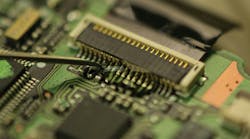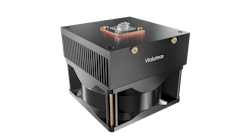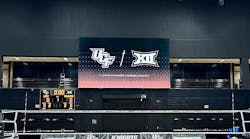Japanese Miriai Co. Ltd. has built the world's largest LED plant growing factory with LED lighting built-in to enable plant photosynthesis. With an area of 800 square meters, the LED plant growing factory now can produce 10,000 heads of lettuce per day.
In Japan, agriculture has become one of the most complicated issues to be solved. Transformation in agriculture is at a turning point. A long-awaited plan is within reach. LED light for vegetables and plant growth can generate safer and more productive grains and food, which is one new way to sustain agriculture development and realize agriculture commercialization in Japan.
LEDs in plant factories makes plants grow regardless of season
LED grow lights from Syhdee produce an artificial light that is able to replace sunlight. It is composed of the most efficient wavelengths. Moreover, the luminosity and wavelengths are adjustable simply by using a switch on both the upper and lower shelves. Cultivated under LED lighting, vegetables and plants can utilize different wavelengths to promote faster growth at any moment with no influence of seasonal variation. Through mimicking the natural environment that is fit for plants, with the LED grow lights to illuminate the whole greenhouse and offer various beneficial wavelengths for plants, vegetables and plants can conduct photosynthesis as successfully as under normal outdoor conditions. So it is much more productive compared with traditional plant production.
LED plant grow lights generate safe and nutritious food
Moreover, it is said by some researchers that LED lights can raise safer and more nutritious grain without adopting any chemical substances. However, there is doubt that food grown in LED lighting is organic or nutritious enough. Researchers suggested that grains grown under LED lighting are much more nutritious and safer than that planted with chemicals in fertilizers and pesticides, for example. When sunlight is replaced with LED light, the intensity of nitrite residue can reach up to 2000 ppm, which is lower than conventional greenhouse farming. Concerning the micro elements and nutrients, it can be solved by manual work. That is to say, the food and plants produced in an LED grow-light-equipped factory are much healthier and fit for human consumption.
In Japan, agriculture has become one of the most complicated issues to be solved. Transformation in agriculture is at a turning point. A long-awaited plan is within reach. LED light for vegetables and plant growth can generate safer and more productive grains and food, which is one new way to sustain agriculture development and realize agriculture commercialization in Japan.
LEDs in plant factories makes plants grow regardless of season
LED grow lights from Syhdee produce an artificial light that is able to replace sunlight. It is composed of the most efficient wavelengths. Moreover, the luminosity and wavelengths are adjustable simply by using a switch on both the upper and lower shelves. Cultivated under LED lighting, vegetables and plants can utilize different wavelengths to promote faster growth at any moment with no influence of seasonal variation. Through mimicking the natural environment that is fit for plants, with the LED grow lights to illuminate the whole greenhouse and offer various beneficial wavelengths for plants, vegetables and plants can conduct photosynthesis as successfully as under normal outdoor conditions. So it is much more productive compared with traditional plant production.
LED plant grow lights generate safe and nutritious food
Moreover, it is said by some researchers that LED lights can raise safer and more nutritious grain without adopting any chemical substances. However, there is doubt that food grown in LED lighting is organic or nutritious enough. Researchers suggested that grains grown under LED lighting are much more nutritious and safer than that planted with chemicals in fertilizers and pesticides, for example. When sunlight is replaced with LED light, the intensity of nitrite residue can reach up to 2000 ppm, which is lower than conventional greenhouse farming. Concerning the micro elements and nutrients, it can be solved by manual work. That is to say, the food and plants produced in an LED grow-light-equipped factory are much healthier and fit for human consumption.
Contact:
Syhdee
Mob: +86-755-61508951
E-mail:
[email protected]Submit new products, case studies/projects, and other press releases at http://www.ledsmagazine.com/content/leds/en/addcontent.html and http://www.ledsmagazine.com/content/leds/en/iif/add.html.




